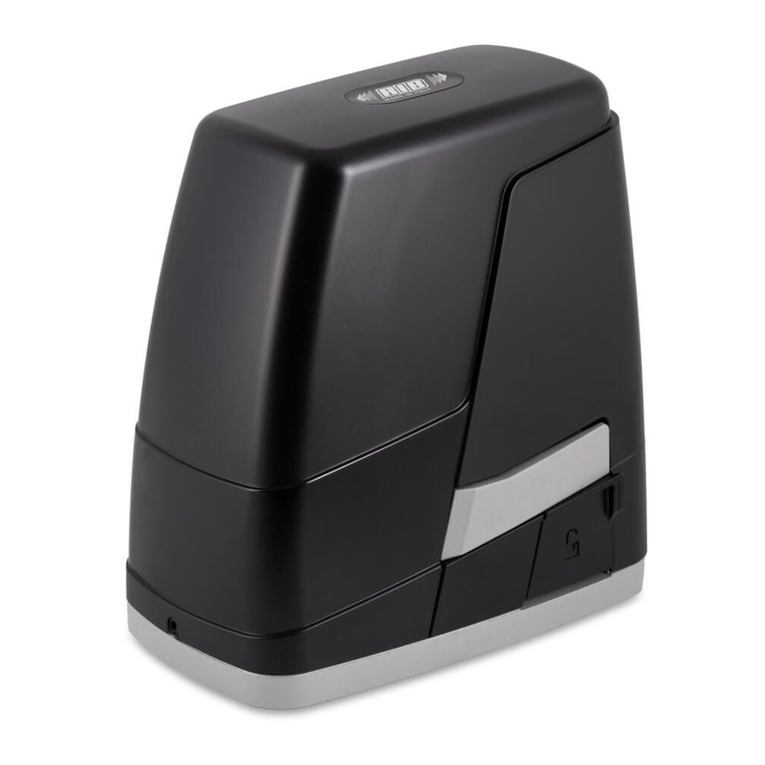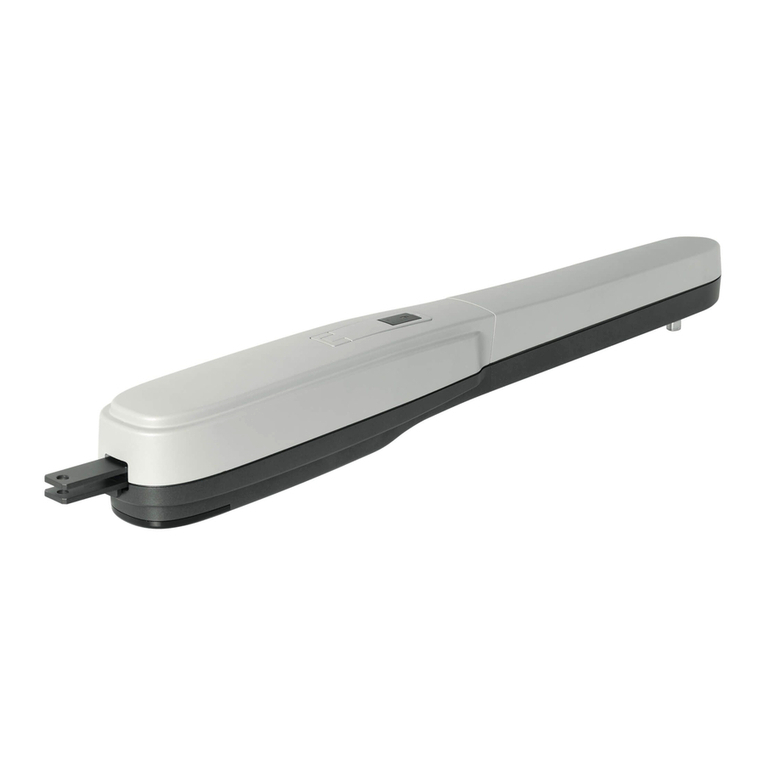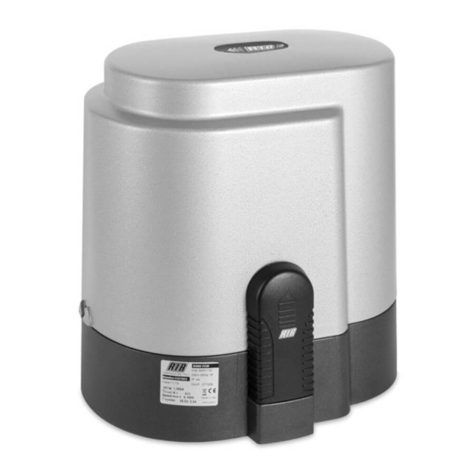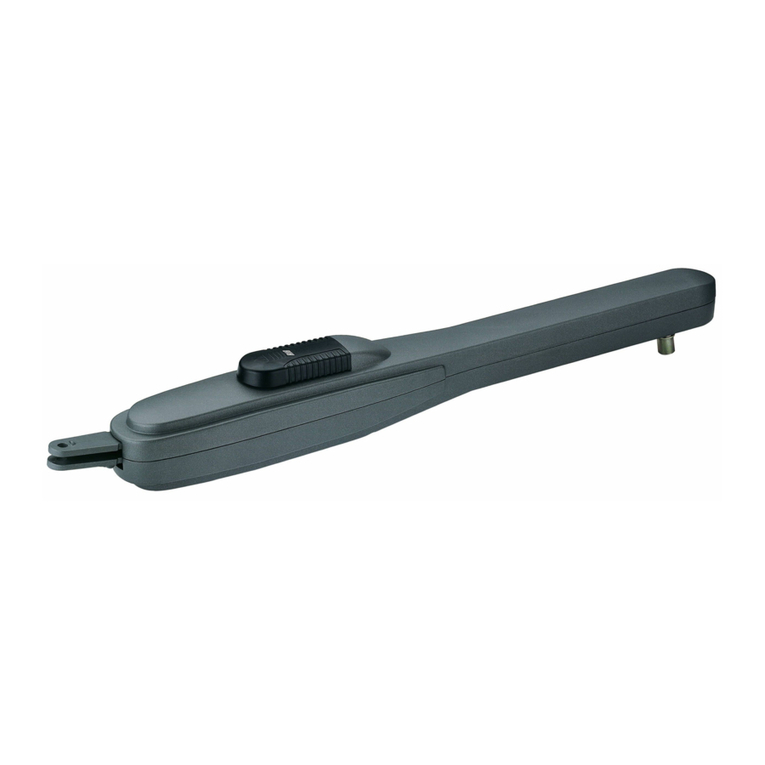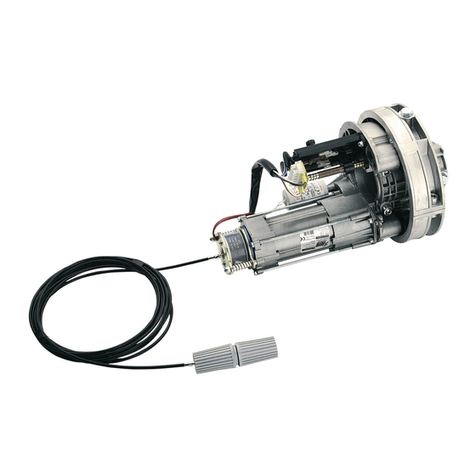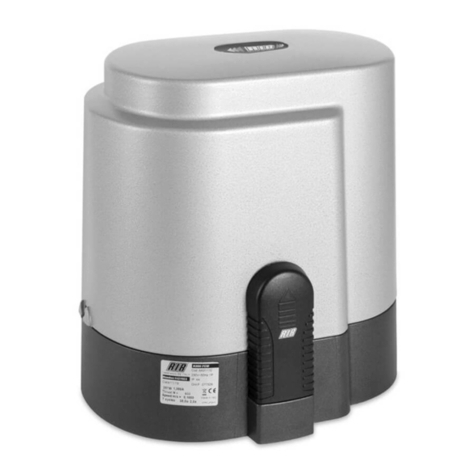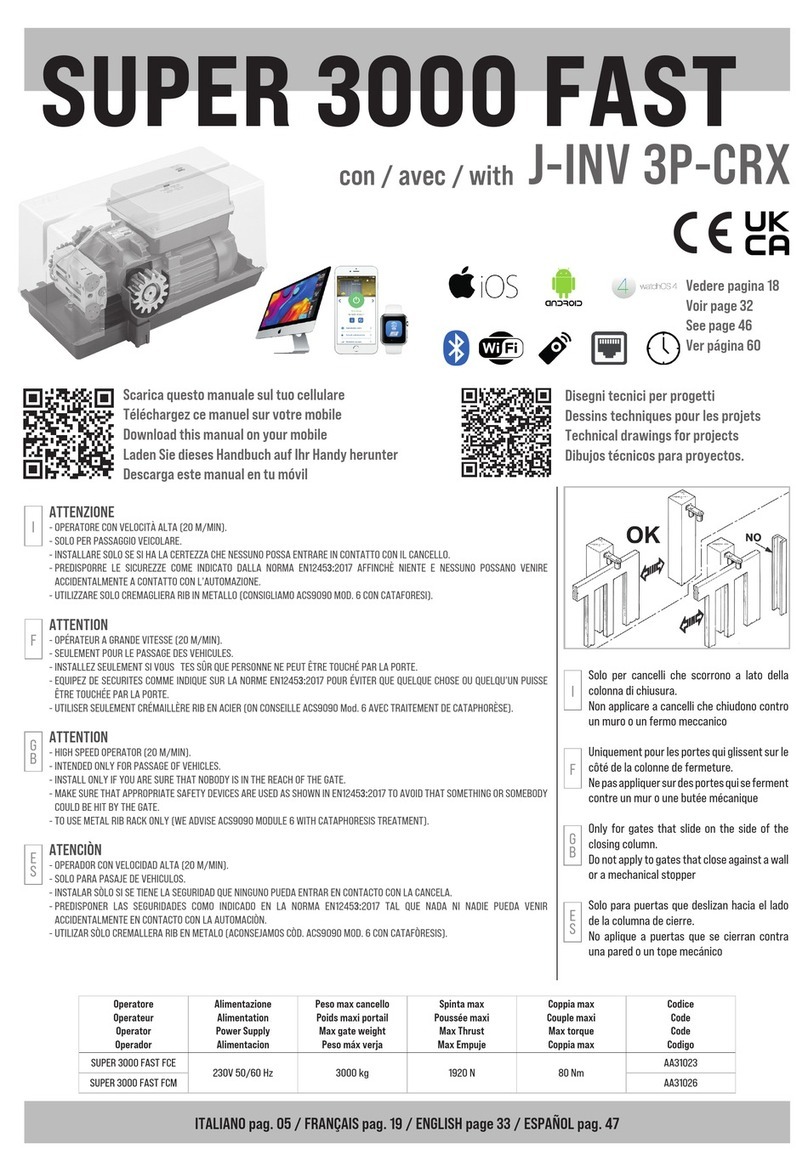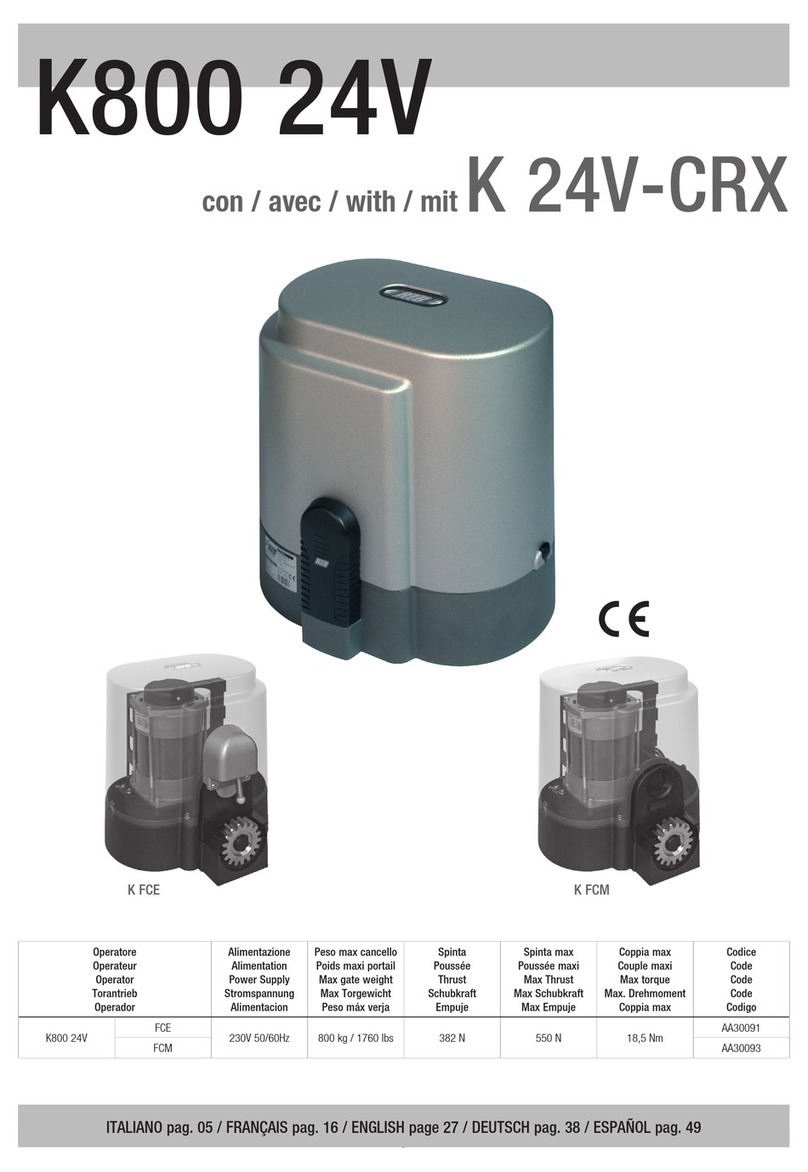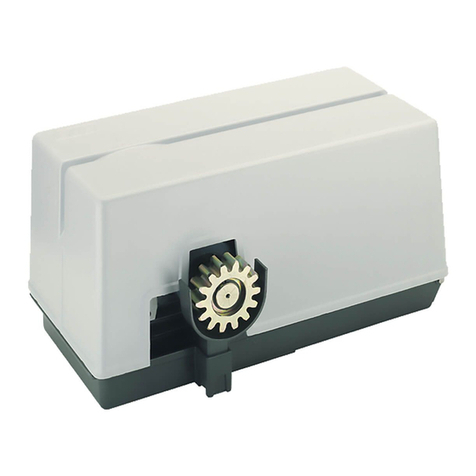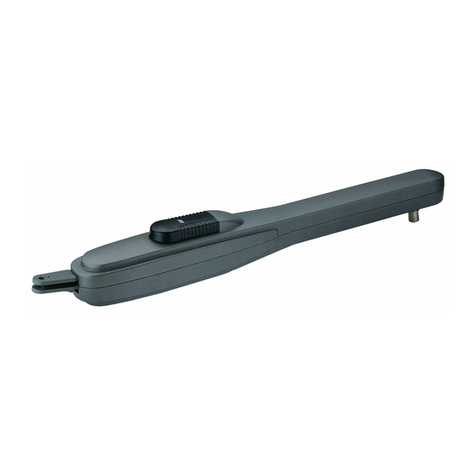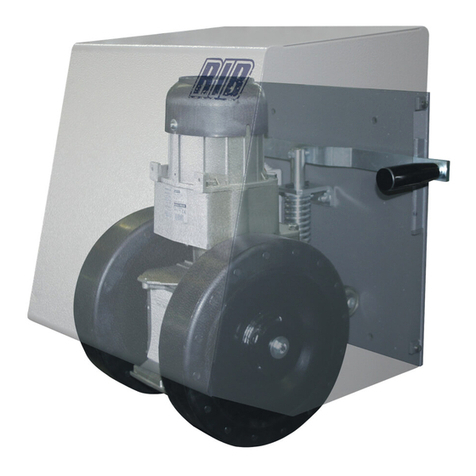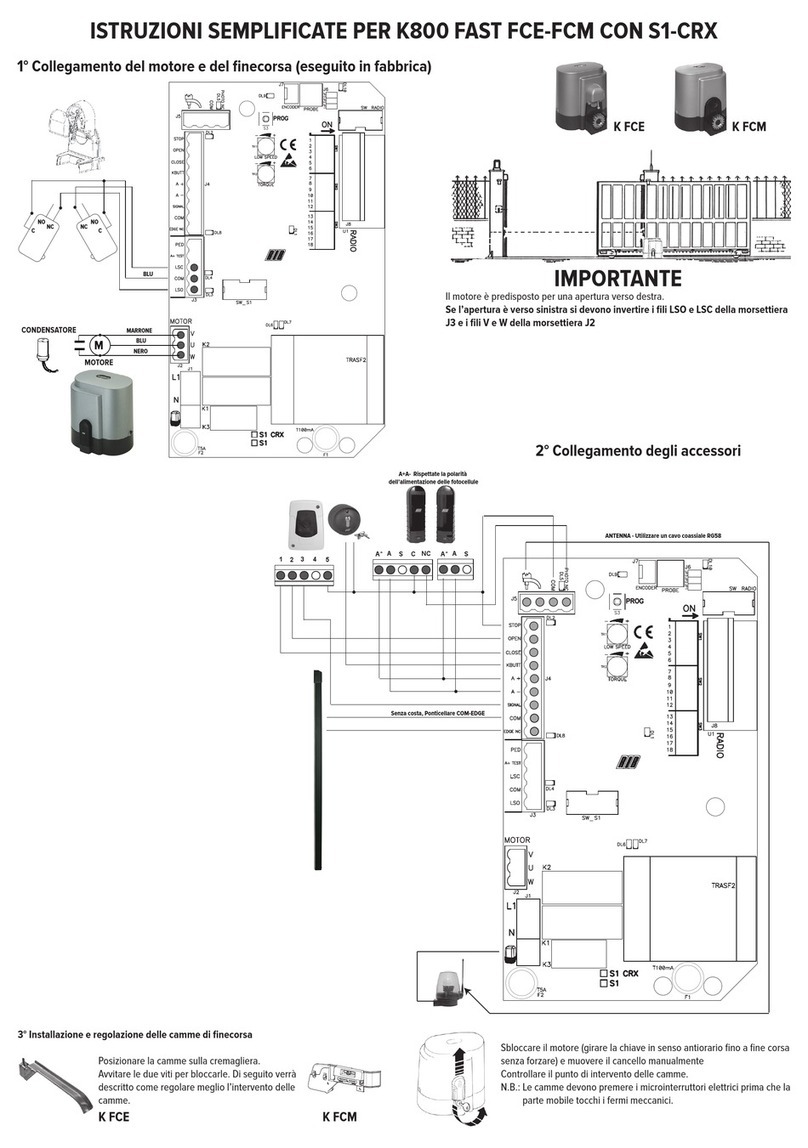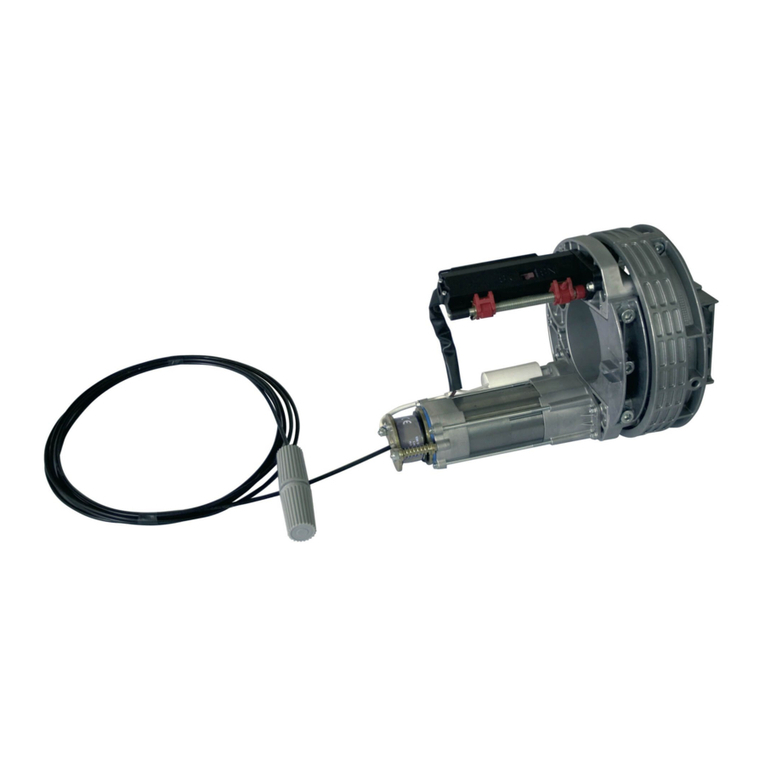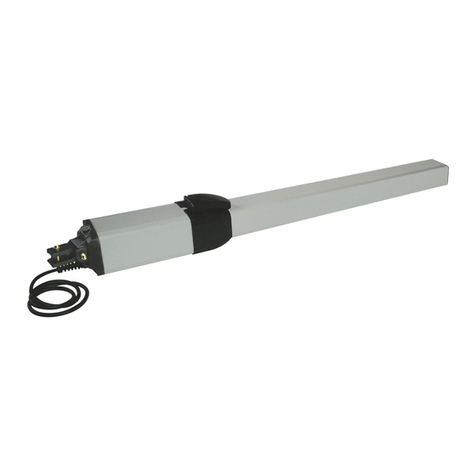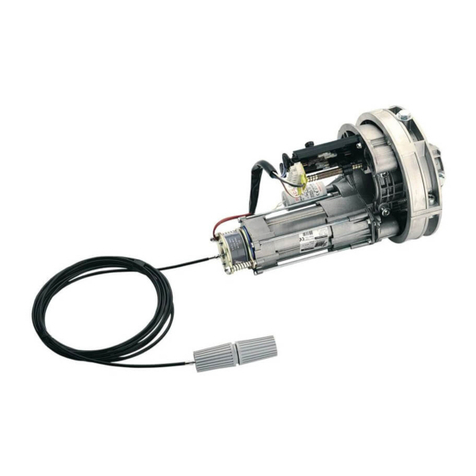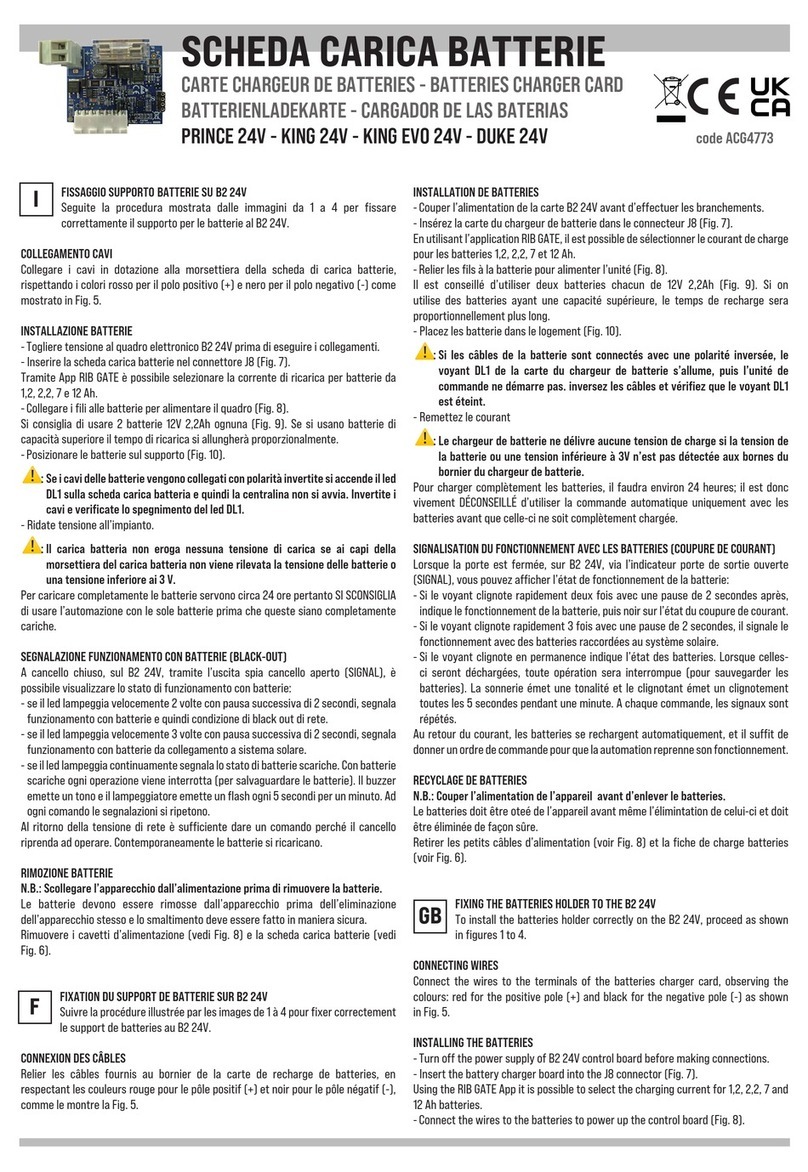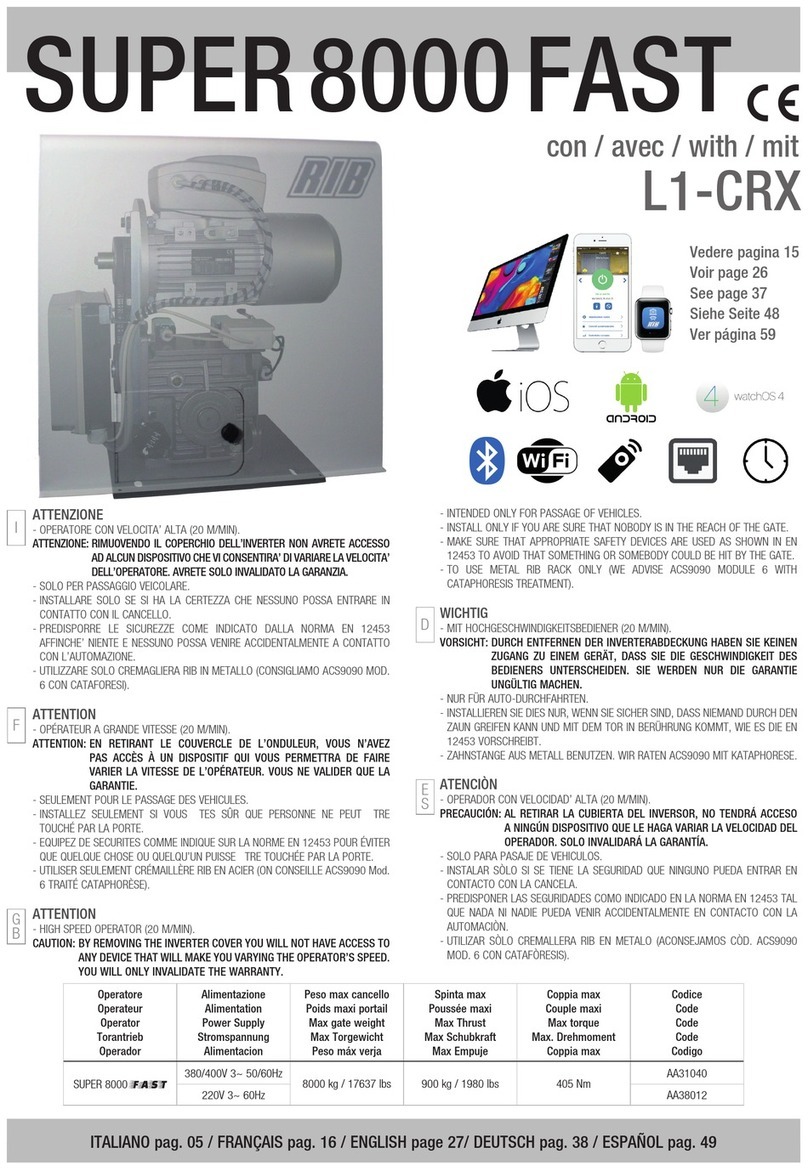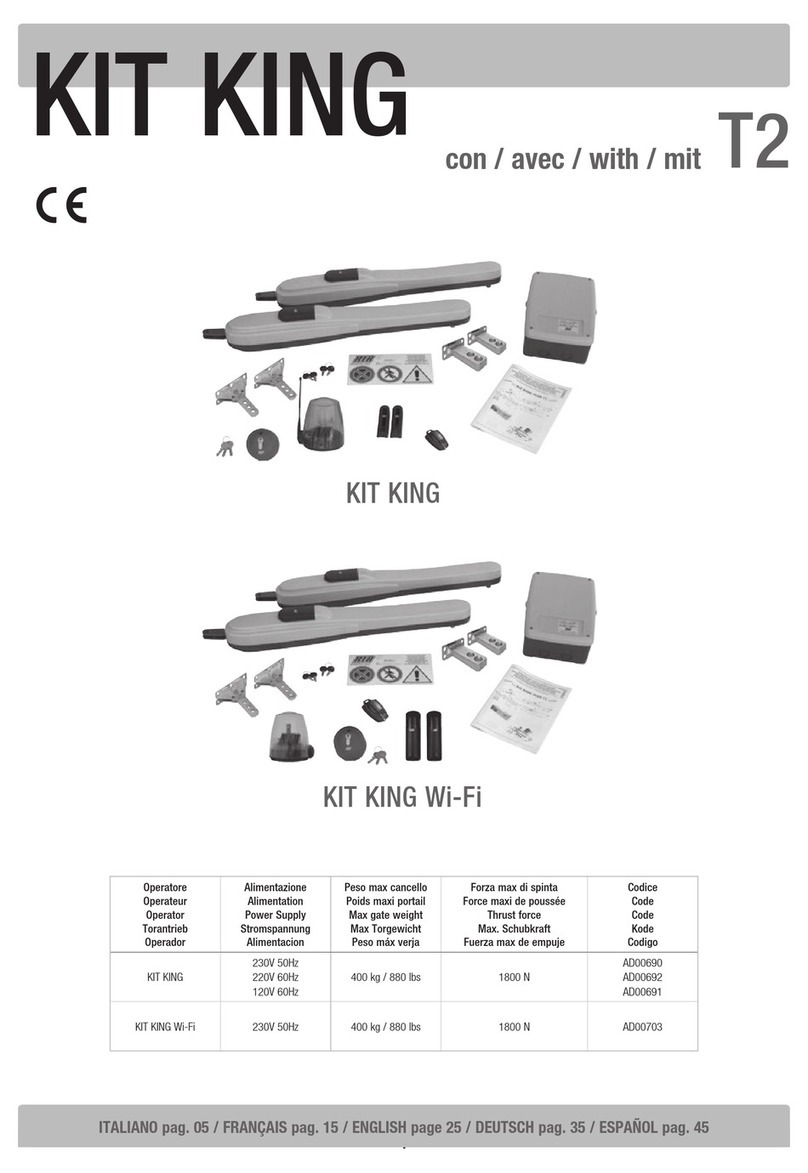
Cod. CVA1946 - 042021 - Rev. 03
-Ruotare la maniglia di sblocco della porta in senso antiorario fino a raggiungere la
posizione di finecorsa: il piatto su cui è stato inserito il perno forato si deve trovare
posizionato in basso (Fig. 18-19).
-Tirare i cavetti d’acciaio con l’ausilio di una pinza facendo in modo che le leve di
sblocco dei BOSS siano completamente a contatto della carcassina d’alluminio
(Fig.8).
-Avvitare il dado a fondo fino a bloccare i cavetti d’acciaio.
-Ruotare la maniglia di sblocco della porta in senso orario e verificare il riaggancio dei
BOSS muovendo la basculante manualmente fino a sentire il bloccaggio dei riduttori.
-Ruotare la maniglia di sblocco della porta in senso antiorario e verificare che la
basculante si apra manualmente.
-Eventuali regolazioni possono essere eseguite utilizzando l’apposita vite forata
filettata, ruotando il perno in modo di aumentare o diminuire la corsa di sblocco.
-Una volta verificata la corretta installazione bloccare il controdado situato sulla vite
forata.
ATTENZIONE:
- L’attivazione dello sblocco può provocare un movimento non controllabile della porta
se questa non è correttamente bilanciata. In questo caso è necessario ribilanciare la
porta basculante.
- Il riaggancio dello sblocco a porta chiusa non garantisce la totale chiusura della
basculante, che rimarrà parzialmente aperta fino a quando non sarà eseguita una
movimentazione elettrica. La corretta chiusura avverrà solamente a chiusura
elettrica completata.
- Per eseguire la manovra di sblocco in caso di mancanza di corrente, utilizzare solo
ed esclusivamente lo SBLOCCO A FILO e NON quello delle maniglie dei BOSS: se per
sbloccare la porta vengono utilizzate le maniglie dei BOSS, il riaggancio dall’esterno
non è possibile agendo sulla maniglia dello SBLOCCO A FILO.
- Tourner la poignée de déverrouillage de la porte dans le sens antihoraire jusqu’à ce
qu’elle atteigne la position du fin de course: la plaque sur laquelle la goupille perforée
a été insérée doit être positionnée en bas (Fig. 18-19).
- Tirez les câbles en acier à l’aide de pinces en vous assurant que les leviers de
déverrouillage du BOSS sont complètement en contact avec le cadre en aluminium
(Fig.8).
- Visser complètement l’écrou jusqu’à ce que les câbles en acier soient bloqués.
- Tourner la poignée de déverrouillage de la porte dans le sens des aiguilles d’une
montre et vérifier que les BOSS sont réengagés en déplaçant manuellement la porte
basculante jusqu’à ce que les réducteurs se verrouillent.
- Tourner la poignée de déverrouillage de la porte dans le sens inverse des aiguilles
d’une montre et vérifier que la porte basculante s’ouvre manuellement.
- Tous les réglages peuvent être effectués à l’aide de la vis percée filetée appropriée,
en faisant tourner la goupille afin d’augmenter ou de diminuer la course de
déclenchement.
- Une fois l’installation correcte vérifiée, bloquer le contre-écrou situé sur la vis
percée.
ATTENTION:
- L’activation du déverrouillage peut provoquer un mouvement incontrôlable de la
porte si elle n’est pas correctement équilibrée. Dans ce cas, il est nécessaire de
rééquilibrer la porte basculante.
- La réenclenchement du déverrouillage avec la porte fermée ne garantit pas la
fermeture totale de la porte basculante, qui restera partiellement ouverte jusqu’à
ce qu’un mouvement électrique soit effectué. La fermeture correcte n’aura lieu que
lorsque la fermeture électrique est terminée.
- Pour effectuer la manœuvre de déverrouillage en cas de panne de courant, utilisez
uniquement et exclusivement le DÉCLENCHEMENT DE FIL et NON celui des poignées
BOSS: si les poignées BOSS sont utilisées pour déverrouiller la porte, le re-accrochage
de l’extérieur n’est pas possible en agissant sur la poignée WIRE RELEASE.
- Turn the door release handle counterclockwise until it reaches the limit switch
position: the plate on which the perforated pin has been inserted must be positioned
at the bottom (Fig. 18-19).
- Pull the steel cables with the aid of pliers making sure that the release levers of the
BOSS are completely in contact with the aluminum frame (Fig.8).
- Screw the nut fully until the steel cables are locked.
- Turn the door release handle clockwise and check that the BOSS are re-engaged by
moving the overhead door manually until the reducers lock.
- Turn the door release handle anticlockwise and check that the overhead door opens
manually.
- Any adjustments can be made using the special threaded drilled screw, rotating the
pin in order to increase or decrease the release stroke.
- Once the correct installation has been verified, lock the lock nut located on the
drilled screw.
ATTENTION:
- Activation of the release can cause an uncontrollable movement of the door if it is not
properly balanced. In this case it is necessary to rebalance the door.
- Re-engaging the release with the door closed does not guarantee total closure of
the overhead door, which will remain partially open until an electrical movement is
performed. Correct closing will take place only when electrical closing is completed.
- To carry out the release maneuver in the event of a power failure, only and
exclusively use the WIRE RELEASE and NOT the one of the BOSS handles: if the BOSS
handles are used to unlock the door, re-hooking from the outside is not possible by
acting on the WIRE RELEASE handle.
Questo prodotto è stato completamente progettato e costruito in Italia · Ce produit a été complètement développé et fabriqué en Italie · This product has been completely developed
and built in Italy
SBLOCCO A FILO PER 2 BOSS
18
19 20
25014 CASTENEDOLO (BS) - ITALY
Via Matteotti, 162
Tel. +39.030.2135811
Fax +39.030.21358279
automatismi per cancelli
s
I
F
G
B






